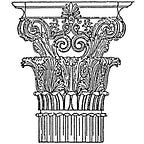Life in the Lab
What I thought it was like to work in a lab
If only TV and movies had taught me what life inside an academic lab might look like, I would imagine wires and pipes everywhere, the sound of glassware clinking and machines humming in the background. From the outside it’s possible to learn that the Energy Systems and Sustainable Cities group (part of the University of Victoria’s Institute for Integrated Energy Systems) has three main focuses: building simulation, computational optimization, and machine learning. Within the Faculty of Civil Engineering the group is considered a computational lab as opposed to an experimental lab. One of the things I love about the program is that it aims to be the greenest civil engineering department in Canada, a concept I can definitely get behind.
Before joining the lab in July 2021, I expected there would be lots of robust discussion, and the lab experience has certainly delivered on that account. I participate in long meetings about the details of sustainable building design internal to the team and externally. One’s work should always be constantly challenged constructively of course, but there’s another characteristic of these discussions that stick out to me: These topics are so complex, so down in the weeds of their subject matter, that often a team approach is the only way to make progress on the problem. Collaboration is required and knowledge shared, such as if a certain approach has already been tried, or if a paper exists somewhere with helpful information.
The publish or parish paradigm is still there, and that path begins with a lot of literature review. Most of the papers I find quite interesting. Firstly, because they address topics I love, and secondly, because they flesh out ideas one might have had previously but never had the evidence for or time to learn. So in that regard it’s a very good education. However, as one can infer about the nature of academic writing, the papers fluctuate in quality, with odd formatting choices sometimes further obscuring their difficult subject matter.
Detailed research into how to reduce the carbon footprint of buildings is multi-faceted and I feel like I had good insight into the lab’s multi-disciplinary work before joining. While we in Canada should for the most part be impressed by how industry in the 21st century has taken up the challenge of reducing greenhouse gases in cities, the process by which the details of building performance are incrementally improved takes time and expertise that isn’t necessarily found in industry. The effectiveness of research institutions to provide this type of knowledge to the public can be seen across history and different fields of study, hence our group’s establishment at UVic for the purpose of making the built environment better.
What it’s really like working in a lab
The reality is that I work remotely for the lab in Vancouver. I absolutely love the lack of distractions, which, in my opinion, marries well with sorting out big complex ideas. Most team members juggle several research commitments at a time, and I myself am continuing to organize and polish several projects’ results. I included some small snippets below with context so readers can get an idea for what I do everyday and see how the results might impact industry.
As more and more people use Dynamo and Grasshopper, the ease of optimization something comes at the push of a button. For a long time now I’ve worried about this dynamic in Canadian architecture because it is far from straightforward to even say if one has found the optimum solution for a given design space. Watching a YouTube series can illustrate complex industry workflows, but rarely strengthens the judgement to analyze and interpret the results. Taking this idea to the extreme, in August 2021 I compared several different types of methodologies to describe what comes out of optimization functions. This topic is normally called Fitness Landscape Analysis, and is helpful to understand the convergence properties of the problem and other related behaviours, which directly informs how good or difficult an optimization process is. Below are shown two different ways to judge the landscape of a function which reveals how difficult the problem might be to optimize.
In the fall of 2021 I started to look at using neural nets to make time series predictions of building performance data. Having sharp algorithms here drives smart high performance buildings in practice. In broad terms, I was comparing recurrent neural networks (RNNs) to residual neural networks (ResNet), but there are many ancillary variables to take into consideration when trying to tune one’s neural network which I don’t detail in this article. One can see from the time series graphics below we are working with some pretty nasty data to train from and target. Like a sports car, if a building, by looking at a whole bunch of input features, can forecast what mechanical or electrical demands are to be expected, smart buildings can then perfectly time their changes to optimize their performance and save energy.
Currently I’m doing a deep dive into genetic algorithms. Personally, they are not my favourite algorithm of all time but I’m learning their strengths. Lots of research by others over the previous 2 decades has pushed them to be state-of-the-art optimization tools. One direct piece of information to pass on is that as a class of algorithms we should probably be calling them Evolutionary Algorithms, or even maybe “biologically-inspired” algorithms. I don’t have any fancy pictures of that work yet as I scale up the research but I expect by the time I’m done in a couple of months to have an excellent grasp of the subject matter, and put together with the rest of my education, be in an excellent position to know what comes out of an evolutionary algorithm or building simulation.
